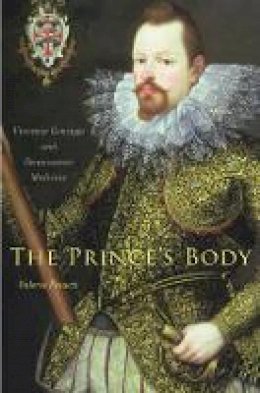
The Prince´s Body: Vincenzo Gonzaga and Renaissance Medicine
Valeria Finucci
Defining the proper female body, seeking elective surgery for beauty, enjoying lavish spa treatments, and combating impotence might seem like today’s celebrity infatuations. However, these preoccupations were very much alive in the early modern period. Valeria Finucci recounts the story of a well-known patron of arts and music in Renaissance Italy, Duke Vincenzo Gonzaga of Mantua (1562–1612), to examine the culture, fears, and captivations of his times. Using four notorious moments in Vincenzo’s life, Finucci explores changing concepts of sexuality, reproduction, beauty, and aging.
The first was Vincenzo’s inability to consummate his earliest marriage and subsequent medical inquiry, which elucidates new concepts of female anatomy. Second, Vincenzo’s interactions with Bolognese doctor Gaspare Tagliacozzi, the “father of plastic surgery,” illuminate contemporary fascinations with elective procedures. Vincenzo’s use of thermal spas explores the proliferation of holistic, noninvasive therapies to manage pain, detoxify, and rehabilitate what the medicine of the time could not address. And finally, Vincenzo’s search for a cure for impotence later in life analyzes masculinity and aging.
By examining letters, doctors’ advice, reports, receipts, and travelogues, together with (and against) medical, herbal, theological, even legal publications of the period, Finucci describes an early modern cultural history of the pathology of human reproduction, the physiology of aging, and the science of rejuvenation as they affected a prince with a large ego and an even larger purse. In doing so, she deftly marries salacious tales with historical analysis to tell a broader story of Italian Renaissance cultural adjustments and obsessions.
Product Details
About Valeria Finucci
Reviews for The Prince´s Body: Vincenzo Gonzaga and Renaissance Medicine
Giovanna Benadusi, author of A Provincial Elite in Early Modern Tuscany It is no longer news that the body has a history. What Finucci offers, however, in this fascinating account of one prince’s body and its diseases, is a revealing microhistory of the noted early modern Italian would-be warrior, lover, and obsessive collector Vincenzo Gonzaga. Chronicling his exploits and his suffering, his illnesses and his diseases, Finucci opens a window on a physical and mental world that is both almost forgotten and yet somehow still with us. Informed by theory, not driven by it, this is a book than swings from the arcane to the profound and to the quotidian with the sure hand of a master storyteller and scholar.
Guido Ruggiero, author of The Renaissance in Italy
